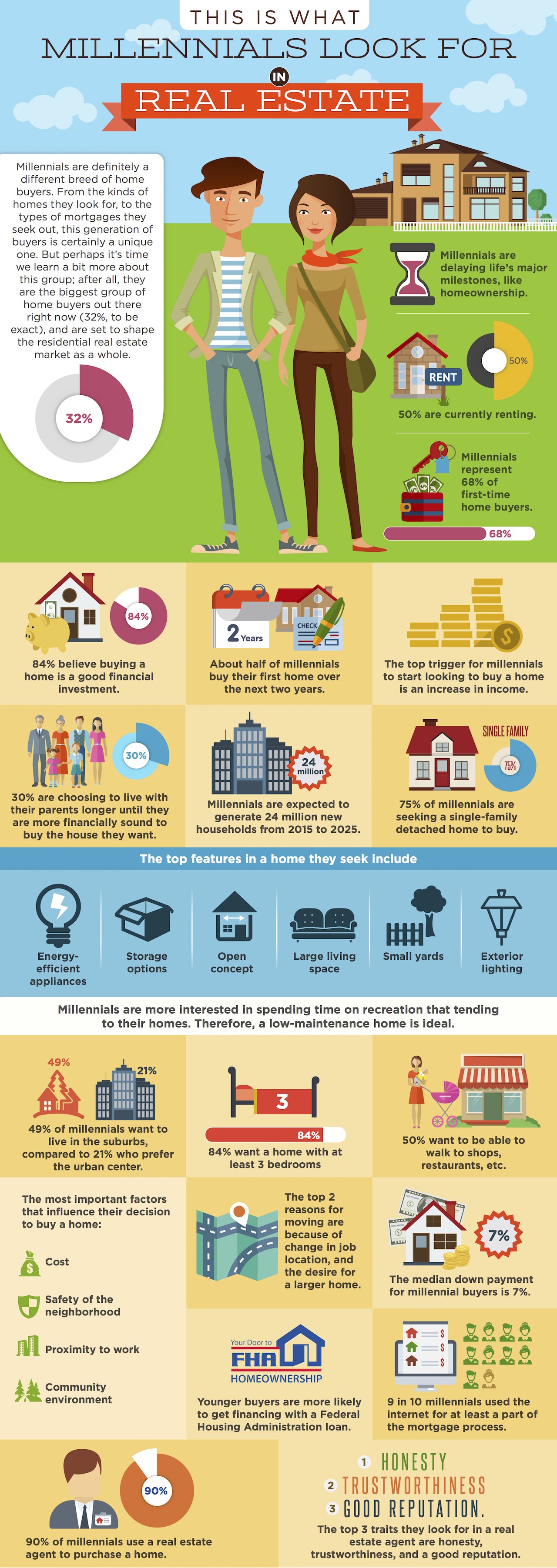Be Wary of These 5 Risks of Buying A Foreclosure
Looking for an amazing deal on a house? Then you’ve probably toyed with the idea of buying a foreclosure. These types of sales have long been praised as an excellent way for buyers and investors to snag a great deal on a property. But there are potential risks involved with this type of an arrangement. Be prepared for the ugly perils when it comes to buying a foreclosed property.
1. Damage and Vandalism to the Home
You’ve got to keep in mind that homes that have gone into foreclosure were once owned by people who couldn’t afford to make regular payments anymore. Basically, they’ve had their homes taken away from them, which no doubt would leave anyone a little jaded. It’s not uncommon for homeowners who have lost their homes to foreclosure to vandalize the place before they finally vacate.
Whether they spray paint the walls or take a sledgehammer to the floors, damage happens. Many times the vandalism doesn’t start until after the homeowners have left, leaving the place open for criminal activity. No one’s there to watch the place, and ne’er do wells are always ready to strike when the opportunity arises. So be prepared to walk into some unpleasant environments when you consider buying a foreclosure.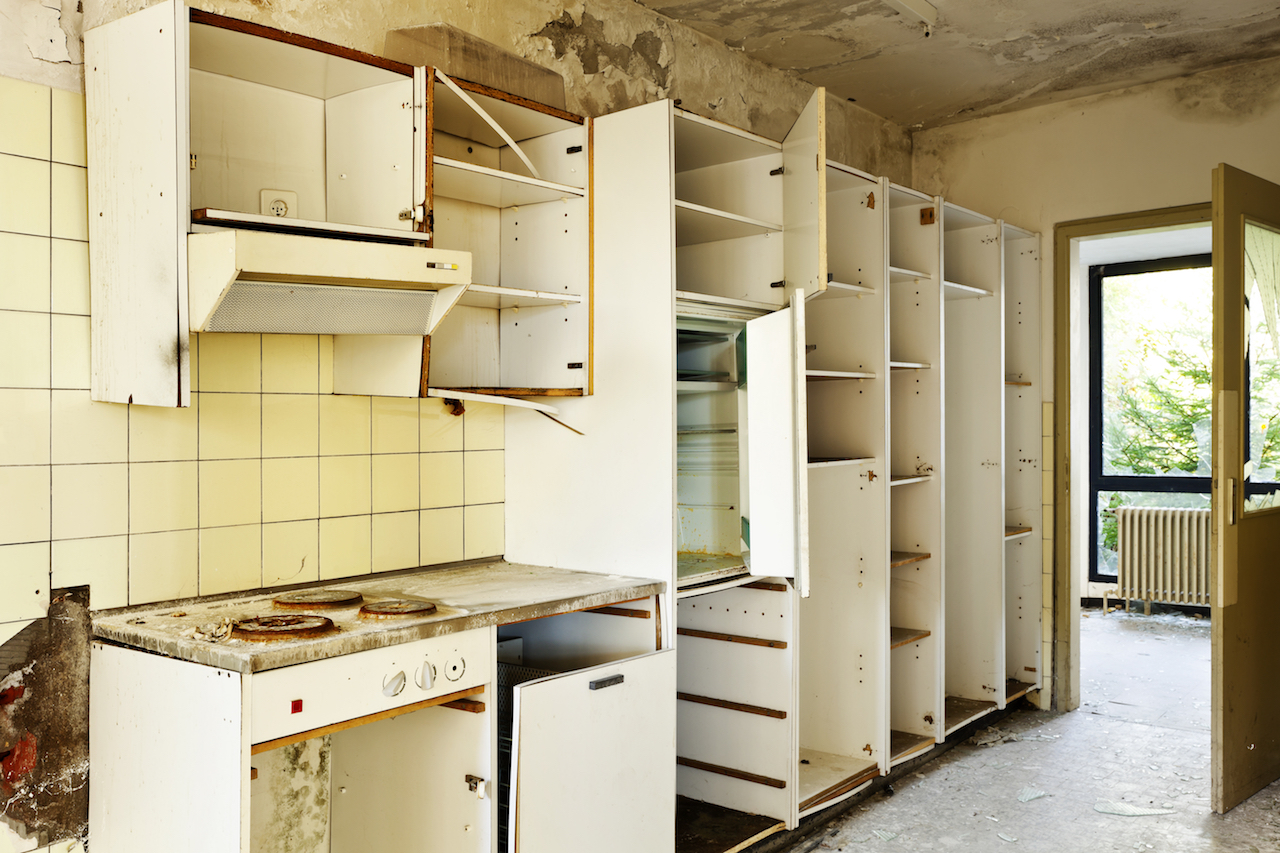
2. Issues With the Actual Purchase
Sure, you might have to put up with a few physical issues with a foreclosed home, but it can still turn out to be a really good deal for you. If you’re willing to put up with certain issues and are able to fix them, you can really add some value to the property despite paying a discounted price. But there are other issues that you might have to face that have nothing to do with the physical property.
Instead, you might encounter problems with the actual purchase itself. Homes that have gone into foreclosure will likely now be owned by the bank, which means this is the entity you now have to deal with. Many times banks won’t use the purchase and sale contract from the local real estate board, nor will they necessarily follow standard procedures.
Instead, expect banks to follow their own path, and use their own contracts and processes in order to protect its interests. You’ll still wind up with the house, but the process itself could become really lengthy and cumbersome.
3. Problems With the Lender
Getting a mortgage for a traditionally purchased home can come with its own set of issues, so don’t expect the situation with a foreclosed home to be any different. In fact, expect more hurdles to jump over.
Lenders aren’t in the business of handing out cash to borrowers for a home they deem to be uninhabitable, or that is appraised a lot lower than what it was sold for. And since the home was likely vacant in the weeks or even months leading up to the sale, they’ll probably have no knowledge of any current problems with the place. That means there’s no seller disclosure statement, leaving you to have to uncover all there is to know about the home yourself.
4. Liens
Many municipalities have specific regulations when it comes to properly maintaining a foreclosed property, such as regularly cutting the lawn. If a bank owns the house, and doesn’t keep its end of the maintenance bargain, the municipality can put a lien on the property if it has to maintain the lawn itself instead.
A bunch of other liens could be found to be placed on the home from unpaid utilities, contractors, HOAs, and so on. If you put an offer on a foreclosure, make sure that all liens are investigated by a title officer and rectified before you take title on the property.
5. Plumbing, Mechanical, and Electrical Problems
Busted-up drywall and ripped out carpeting is one thing, but issues with the major systems in a home is quite another. Some of the most catastrophic issues in foreclosed homes stem from faulty plumbing, mechanical, and electrical systems.
Broken plumbing pipes can wreak havoc on the components of a home, not to mention leave mold behind that will render a home unfit to live in. When it comes to duct work, you may be unpleasantly surprised to find an exorbitant amount of dust and debris, not to mention rodents and other unwelcome guests.
If humidity has been left around furnaces for a long period of time, the heat exchangers will likely corrode, requiring them to be replaced at a costly expense. Any shoddy electrical work is considered to be a potential fire hazard. And in cases like this, the whole house might need to be rewired. Not exactly a cheap endeavor.
The Bottom Line
There are definitely some awesome deals out there on foreclosed homes. It’s just a matter of wrapping your head around some of the potential obstacles and pitfalls, and being prepared to deal with them head on. One thing’s for sure – don’t let a super low listing price cloud your judgement and allow you to gloss over the basics that make a foreclosure purchase a good deal.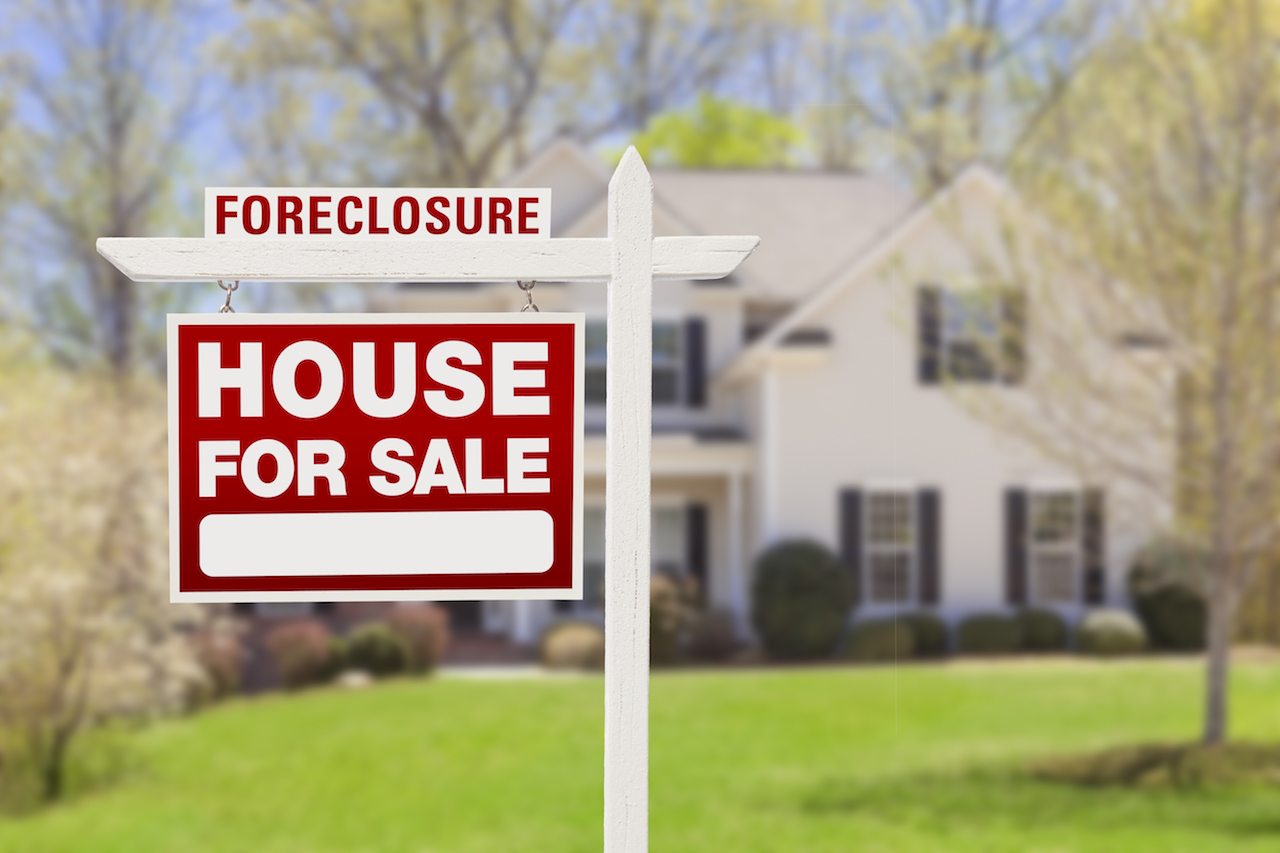
How to Buy and Sell a Home at the Same Time Without Going Insane
 First-time homebuyers might have their own unique set of challenges, but one thing they do’t have to worry about is dealing with the sale of a current home while looking to throw the mortgage onto another.
First-time homebuyers might have their own unique set of challenges, but one thing they do’t have to worry about is dealing with the sale of a current home while looking to throw the mortgage onto another.
Unless you’ve got the cash to carry two or more homes at once, things can get tricky when it comes to repeat home buying. In a perfect world, you’d find a new home, put yours on the market, and close both deals at the exact same time so there’s no worrying about carrying two mortgages at the same time or having to find a temporary place to lay your head if there’s a gap between closings.
While this is possible, it’s not going to happen without a little suaveness on your part – and a little luck. The truth is, you’ll probably have to put up with a little bit of juggling when buying and selling at the same time.
The good news is, this doesn’t have to be a pull-your-hair-out type of scenario. You can survive the buying and selling process at the same time, and here’s how.
Get a Good Handle on the Market
Should you buy first or sell first? Depending on who you ask, you’ll get a different answer. The best way to answer this question is to start off researching the real estate market in your area.
Identify if you’re in the middle of a buyer’s or seller’s market, which will help sway your decision whether to buy or sell first. For example, if you’re in the midst of a buyer’s market, it might be a better idea to put your home up for sale first, since it might take longer to sell than to buy in that type of a market. You don’t want to be stuck paying interest on two mortgages that you’re carrying because you managed to find and close on a new home while your current home sits on the market waiting for an interested buyer.
The opposite is true in a seller’s market. In this case, looking for a new home first might be the better option, since you’ll probably be able to sell faster than find your next home.
Do Your Best to Keep Both Closing Dates in Sync
As mentioned earlier, having both closing dates happen one right after the other would be ideal, but it can be pretty tough to make that happen. But that doesn’t mean it can’t be done. There are some things you can do to try and bridge these two dates as closely as possible.
For starters, consider listing your home for sale and start the search for a new home at the same time. Research all of your options, make sure your credit score is healthy, and start getting pre-approved for a mortgage. The sooner you get your finances in order, the better.
Think about adding a contingency in your buyer contract – whether it’s the purchase agreement for your current home or the one you’ve put an offer on – to get the closing dates to line up. For the contract involving the home you’re buying, ask the seller to make the purchase conditional upon the sale of your current home. This could work if the sellers aren’t able to find a buyer in a decent timeframe. Just make sure you can give them reasons why your home should be sold quickly.
When it comes to the contract involving the sale of your home, wheel and deal with the buyer, and ask for a contingency to be added to the contract to make the closing date line up with the closing date of your new home. While this might not work with many buyers, those that absolutely love your home might be willing to make a sacrifice to ensure their name ends up on title. So make sure you paint your home is the best light possible with some professional home staging to up the odds of making this plan work.
Offer a “Rent-Back” Option
If you’ve managed to snag a buyer who wants in, but you haven’t found a new home just yet, consider offering a “rent-back” option to the buyer. In this scenario, the buyer agrees to rent out your current home to you for a stipulated time period while you continue your search for a new home. You can negotiate a lower selling price or pay rent in exchange for being able to stay in your home until you find a new one.
Just bear in mind that some lenders might have a problem with this arrangement. But this can be a lot more convenient then shacking up with your parents or renting an extended-stay hotel room, so it’s worth a shot.
Tap Into a Bridge Loan
Bridge loans are specifically designed for those who have closed on a new home before closing on the sale of their current property. In this case, you’re given a short-term mortgage to cover the down payment on your new place before you sell your current one. This temporary arrangement essentially “bridges” the gap between the purchase of a new home and the sale of an old one, hence the name.
Bridge loans are secured by the buyer’s existing home, and the money from the bridge loan is put towards a down payment on the next property. When your current home is finally sold, the loan is repaid using the proceeds from the sale.
This is an attractive option, because it eliminates any restrictions that you would have otherwise faced worrying about lining up both closing dates. Not everyone’s got the cash to pay two entire mortgages, but a bridge loan can cover them both for a temporary amount of time in an affordable way.
Just the thought of buying and selling at the same time might sound incredibly stressful, but it doesn’t have to be. With a little research and preparation – and the help of a professional real estate agent and mortgage specialist – you can totally minimize the hassle of buying and selling a home at the same time.
Using Video to Market Your Property
These days, you’ve got to up your game when it comes to marketing your property for sale.
Having a video of your home plastered on the internet offers buyers an instant up-close and personal look at your property that simple images and words just can’t offer. With a virtual walk-through of the home, buyers can more easily get a feel for the flow of the interior. And it can be accessed 24/7!
Using video and the internet to your advantage means you can connect with prospective buyers anytime and anywhere, and create some buzz around your listing.
Shoot Your Video With Professional Equipment and Expertise
Forget about recording your home tour with your iPhone – that’s just not going to cut it. You want to impress buyers, you’ve got to show them your home in the best light possible. That means you’re going to have to get your hands on a decent camera, and perhaps even use the expertise of a professional videographer.
Paying attention to detail and capturing your home in its best angles is essential to creating a high-quality property video. You need good lighting, clear audio, a well-spoken voice guiding the tour, solid editing, and appropriate background music to make it all come together. A good video will be sure to impress buyers, and entice them to learn more about the property.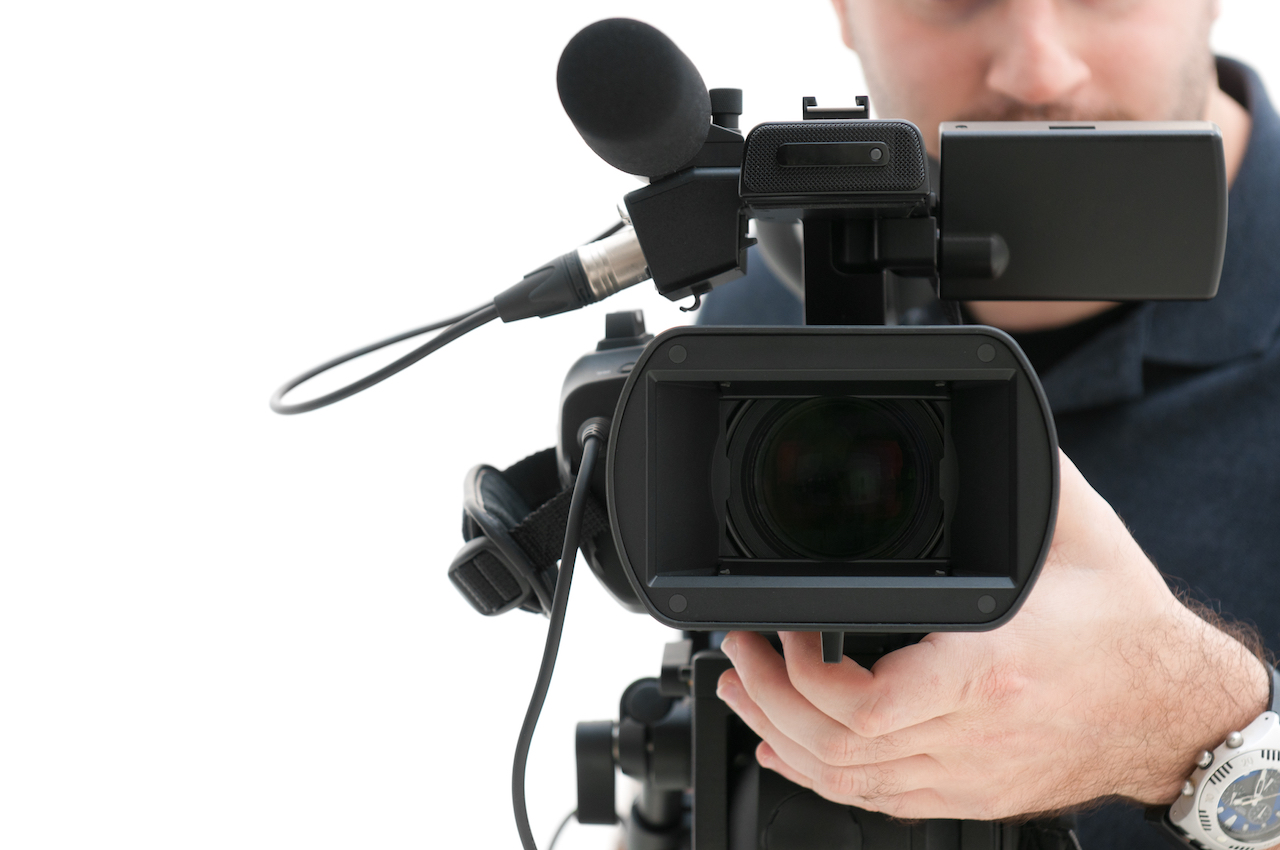
Upload Your Video to YouTube
A video is 50 times more likely to show up on Page One of a Google search compared to simple text on a webpage. Good enough reason to incorporate video into your marketing scheme, right? While there are plenty of places that you could upload a video showcasing your property, YouTube is by far the best. After all, the video-sharing site has over 1 billion users a month, and over 50% of prospective homebuyers use YouTube as their main source for video research.
Even if your listing doesn’t reach top spot on the page, the thumbnails that Google randomly places beside the video results are more likely to attract the eye than simple text links. And by including rich keywords in the description of your video when uploading, you can help Google rank you highly, making it easier for buyers to find your property.
Include a Keyword-Rich Description
While the video itself is what’s going to speak to viewers, don’t miss out on the opportunity to use the content box below the video to provide a detailed description of the property. Use your words wisely, as you don’t want your viewers to have to go through an essay just to reach the end of your description. They won’t stick around long enough for that, so get to the point.
Be sure to include rich keywords in the description to help your video rank as high as possible on search engines. If people are using “detached homes in Orange County,” then use that phrase in your description (if it applies, of course). And include a link to your real estate agent’s website that’ll lead viewers to a more detailed listing of your property.
Promote Your Video on Social Media Sites
After you’ve got your video uploaded on YouTube and other sites, it’s time to promote it. And one of the best and easiest ways to do that is to toot your own horn on social media. Instead of posting a pic of what you’re eating for dinner or updating your status to vent about last night’s episode of Grey’s Anatomy, use these channels to promote your real estate listing video. Use Twitter, Facebook, Instagram, LinkedIn, or any other social media platform to get as may eyeballs on your listing as possible.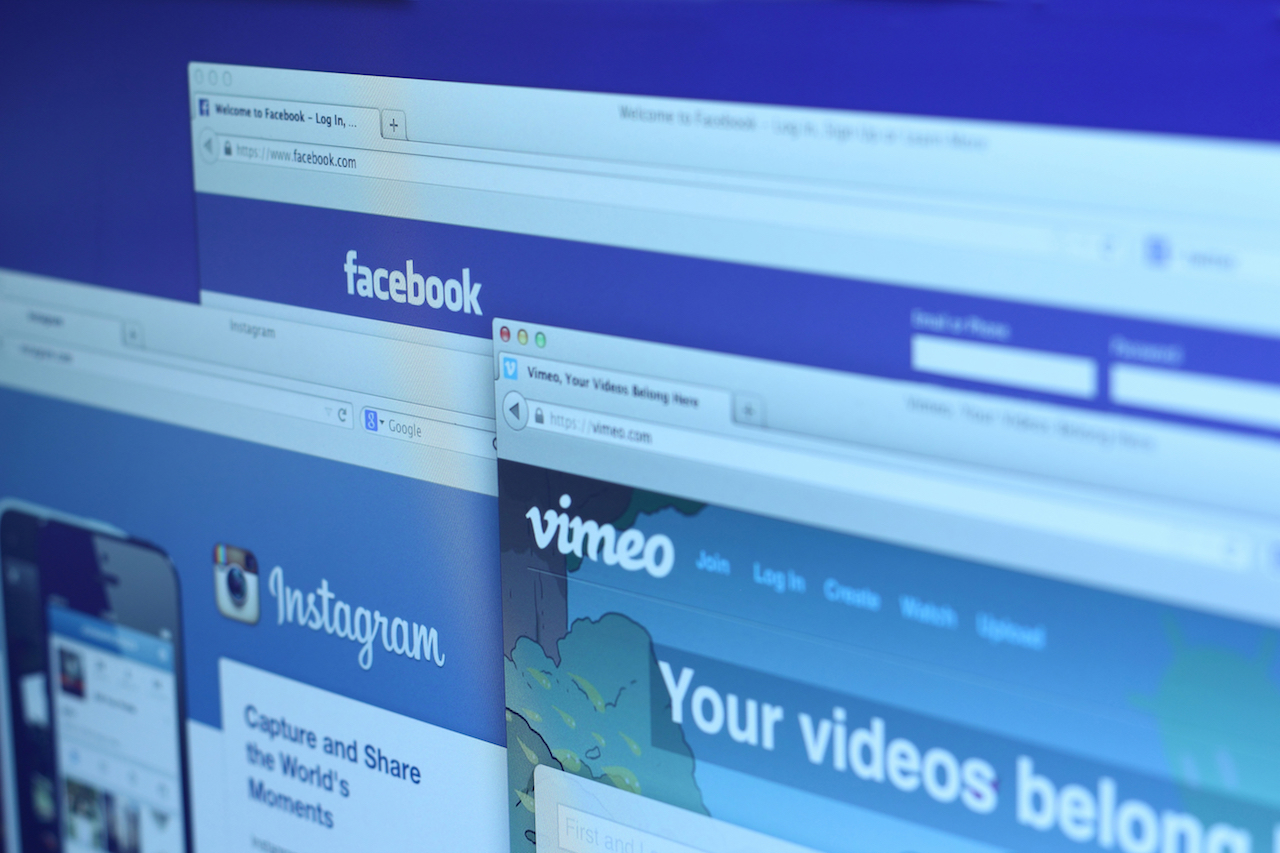
Include a Rider on Your ‘For Sale’ Sign With a Link to Your Video
You can easily get a lot of local attention by including a link to the video on a rider hanging off your For Sale sign. These days, everyone’s got a smartphone on them with photo and video capabilities. It takes a second to whip it out and snap a picture of the sign and its accompanying link to the video tour of the listing for them to refer to when they’re ready to type in the URL into their web browser.
There are plenty of marketing channels to employ to advertise your home for sale, and video is definitely among the more effective ones. Considering the possibilities and benefits of using video as a marketing tool, why not use it to show buyers what you’ve got to offer?
5 Reasons Why You Should Buy Your Next Home in 2016
Still got cold feet about buying a home? Wait ’till 2016 rolls around! With the new year upon us, now’s the time for all you renters and first-time buyers out there to start organizing your finances and jump on the homeownership bandwagon.
Of course, it’s totally understandable for it to be overwhelming and even intimidating to jump into homebuyer status, given the recent financial crisis that plagued the nation. But given the key economic indicators that are flashing right now, 2016 is potentially the perfect time to buy.
And here’s why.
1. Mortgage Rates Are Still Ridiculously Low – But Not For Long
If you want to lock into a mortgage, now’s the time to do it. Consumers have had the benefit of low interest rates for quite some time now, but there’s talk of rates finally increasing in the new year. You likely won’t be seeing rates this low for a long time to come, so the earlier you lock in, the better.
As it stands right now, you can still get a rate around 4%. If you can lock a mortgage in while rates are still low, you can knock a good chunk of change off your mortgage payments. Low interest rates makes home buying more affordable. Put more of your hard-earned cash towards the principle instead of flushing in down the toilet in interest payments!
 2. Rent Prices Are Forecasted to Spike
2. Rent Prices Are Forecasted to Spike
Renting might be a good way to get your feet wet in the real estate market, but it looks like rental rates are about to experience an uptick in 2016. In many of the major centers in the US, supply is running low while demand is still strong. This off-balance is causing rent prices to teeter to the side of landlords who are able to charge more for their units as supply continues to remain sparse compared to demand.
In the last year alone, nearly 90% of property managers across the US have jacked up their rent prices, with no sign of that slowing down any time soon. So instead of throwing your money away in rent, you could potentially spend the same amount each month to be put towards home ownership and building equity instead.
3. “Know Before You Owe” Mortgage Regulations Put Buyers in the Driver’s Seat
Ever try to navigate mortgage paperwork? It’s like reading a foreign language if you’re not an agent yourself. And if you’re not careful, you could wind up getting stuck with mortgage terms that you’re not comfortable with.
Well, not anymore, thanks to the new TRID rules that came into effect this past year. Also known as the TILA-RESPA Integrated Disclosure rule, mortgage forms and loan costs are now being organized and stipulated in such a way as to make it a lot easier for the average homebuyer to understand all the terms involved. This gives consumers a better chance to make sound decisions and choices when it comes to their mortgages at the closing table. That way, there are no unpleasant surprises waiting for them once the keys are ready to be handed over.
 4. Prices of Homes Will Be Scaling Back
4. Prices of Homes Will Be Scaling Back
For a while there, it was super tough for the average consumer to be able to afford some of the sky-high prices of homes that have been listed. And it still is in many centers across the country. But these prices are likely to slow down quite a bit in 2016, making home ownership more affordable for the average joe. Just don’t expect this price cut-back to be as pronounced in super-hot markets like San Francisco or NYC, where prices aren’t forecasted to pull back as much in the coming year.
5. More Properties Will Be Making Their Way to the Market
Along with the deceleration of home prices will come more homeowners listing their properties, giving homebuyers more selection. Let’s face it: anyone who’s hung onto property over the past few years has had the opportunity to build up serious equity as prices continued to skyrocket month after month. Many of these home owners want to cash in on that equity, and are more likely to list in 2016 to liquify their money. That means buyers will have more selection when it comes to he home-buying process.
Not only that, but the new home construction market is also probably going to grow in 2016 with builders placing more focus on starter and middle-range homes. That’ll do well to spike inventory and make it easier for homebuyers to snag a place. More homes on the market means the potential for prices to ease off even more.
All these forecasts for the new year point to fantastic possibilities for those who are finally looking to put their name on title of a home. Just make sure that you’ve got a professional real estate agent in your corner who’s experienced in the specific neighborhoods you’re looking to plant some roots in.
Nate Berkus and Jeremiah Brent List Their Greenwich Village Pad For $10.5M
Design guru Nate Berkus and his equally design-savvy hubby Jeremiah Brent just listed their hoity toity Greenwich Village apartment for a cool $10.5 million.

It was only two short years ago that the design couple settled into this Lower Fifth Avenue apartment with their daughter Poppy after Oprah’s fave designer sold his 9th Street crib only a hop, skip and a jump away.
And considering the fact that they paid $5 million for it at the time, they’re making a pretty penny off the place if they get anywhere near what they’re asking. Perhaps it’s a bit on the ambitious side to be asking more than double what they paid only a couple of years ago, but it looks like Mr. Berkus and his husband really hold their redesign to the highest of standards.
Located just above Washington Square Park in the 1922-built building, the pad is positioned in the ideal spot surrounded rich cultural heritage that is unique only to the highly coveted Greenwich Village.

The couple designed every inch of it, so it’s a no-brainer that the 3-bedroom, 3-bathroom spread is a stunner. So striking was the renovation that the apartment was featured on the cover of Architectural Digest once the remodeling was complete.
The bright and airy penthouse duplex is bathed in white, and boasts cathedral-like coffered ceilings and gold and black accents throughout.

A key player in the 2,800 abode is the massive Carrie Bradshaw-esque closet that’s seriously bigger than most apartments in The Big Apple. The master bedroom boasts it own fireplace (one of three in the whole penthouse), as well as a spa-like master bath equipped with a glorious free-standing cast iron bath tub and double sinks.
The sizable gourmet chef’s kitchen is equipped with an 8-burner range, a butcher’s block, marble counters, and skylights, and spills into a formal dining area. You’ll be lead to private living quarters on the lower level via the fabulous wrought iron staircase – it’s the perfect spot for overnight guests to get a little ‘me’ time. On the upper end, the dramatic all-glass double-doored terrace overlooks the dazzle of lower Fifth Avenue.

Whoever decides to put in an offer on this puppy will have the option to purchase the gorgeous furniture that already adorns the place. It’s not necessarily part of the sale, per se, but for the right price, the power couple will entertain any offers on special request. And buyers should also take note of the hefty maintenance fees: a cool $7,073 per month.
Based on how truly magnificent this place is, it’s probably going to sting a little to cut ties with it. Whatever the case may be, one thing’s for sure – Nate’s new place is going to have to feature an equally large wardrobe and shoe closet – after all, you can’t go backwards. And Poppy’s only going to get older, which means the shoe collection is only beginning.
So where is the Berkus-Brent family off to next? West Hollywood, where they recently purchased a $2.36 million 4-bedroom home. Looks like an expansion of the family is in the works, perhaps?
Here’s the Scoop on High-Efficiency LED Lighting For Your Home
Remember back in the day when LED lights first came out on the market?
People were slow to adopt them because they gave off sort of a bluish-white tint, which didn’t exactly match the bright-light incandescent lightbulb variations. So unless homeowners were willing to replace every bulb in the house, LED lights were sort of a dud when they first emerged.
But we’re a lot smarter now, and technology is much more innovative these days. Now, LEDs (light-emitting diodes) produce a nice, warm, yellow light that many homeowners prefer to light up their living areas with.
Even the cost has dropped significantly since LEDs first came out. In fact, the average price of a 40W replacement LED light bulb has now dropped down to about $10. Compare that to the hefty price tag of upwards of $40 when they were first introduced.

Sure, they’re pricier than your traditional incandescent bulbs upfront, but there’s no denying their awesome return on investment. LED lights are a lot cheaper to run (75% cheaper to be exact), give off better light, and last up to 25,000 hours – that’s a lot longer than the old-fashioned stuff.
And if you thought the energy savings was amazing, perhaps the best part of LEDs is how flexible they are. You can vary up the ambience in your space. From cozy and soft to sharp and cool, LED lights come in all sorts of variations that let you create the exact lighting aura you’re looking for. And they don’t just come in your run-of-the-mill bulbs, either.
You can get LEDs in ropes, tape, strips and pucks – in addition to bulbs. Use them for your main lighting, accent lighting, uplighting, and so on.
Speaking of which, let’s take a closer gander at each of the aforementioned LED versions, shall we?
LED Rope Lighting

Want to decorate your palm trees? Light up your outdoor walkways? Run some lights across the crevices on your staircase? Or how about edge your landscaping? There’s no easier and more convenient way to do this than with LED rope lighting.
Rope lighting is exactly what it sounds like – it’s literally rope (usually made out of plastic or rubber) that encases tiny LED chips. While they’re not necessarily as bright as other LED variations, they’re perfect for giving off just enough light to illuminate a space in a subtle manner, and creating a warm ambience.
LED Tape Lighting
As if rope wasn’t convenient enough, LED tape takes things to a new level. You literally take these strips and tape them onto whatever surface you want. There’s no need to fasten it with any tools – just peel and stick! You can even cut the strips to fit the precise length that you require.
LED tape strips are ideal for under-cabinet lighting to provide just the right amount of light to your kitchen countertops. The LED chips embedded in the strips are really close together, and tend to cast a whitish glow when they’re turned on underneath kitchen cabinets.
LED Panel (or Strip) Lights

You can use strip LED lighting to create a dramatic yet soft look by using the panels as backlights for things like mirrors and coffered ceilings. They’re perfect for rooms like bathrooms or kitchens because of their moisture-resistant properties.
LED panel lighting consists of multiple LED chips that are built right into a metal enclosure that’s then covered by an acrylic protectant. Since there are more chips in LED strips compared to LED tape, they’re usually brighter. LED strips come in lengths of 10, 20- and 40 inches, depending on where you’re installing them.
LED Puck Lighting

These are great for highlighting objects in cabinets, bookshelves, or anywhere that task lighting is warranted. They’re a much better option compared to other puck lighting that emits a ton of heat. You can get them either in battery-powered or plug-in pucks, which you can buy either as a set or individually.
Pucks are a good option if you want specific areas illuminated, rather than an even distribution of light that strips and rope lighting provide.
Wanna be thoroughly impressed?
How about Wi-Fi-connected LED bulbs, which you can operate from your mobile device! Next time you forget to shut the lights off before leaving the house, simply click a button from wherever you are rather than turn the car around half-way from work.
Take things one step further and get yourself LEDs featuring light combos that let you produce seemingly unlimited colors across the spectrum. Many systems even adjust the colors emitted based on the time of day, or even what the weather is like! And don’t assume it’s complicated to set up, either. It’s not. The majority of these variations come with plug-and-play functionality, so there’s no need to go out and buy a bigger connected system.
Lay those tired old incandescent light bulbs to rest already and make the switch to more versatile, energy-efficient LED lights for your home!
Incorporating Pantone’s Serenity & Rose Quartz Into Your Home Decor
Not one, but two colors have been chosen by Pantone as the ‘it’ shades of 2016.
The winners? Pantone 13-1520 TCX (Rose Quartz) and Pantone 14-3919-TCX (Serenity). In layman’s terms, that would be pastel pink and pastel blue (with a touch of lavender).

So what’s up with these specific color choices? According to Pantone, it all has to do with the blurred lines in the gender realm of our current times. That’s right – the colors of the year have been heavily influenced by cultural forces, and more specifically, the acceptance of gender fluidity in society.
No other two colors are more representative of gender – traditionally, pink for girls and blue for boys. And by choosing these two specific hues, Pantone hopes to help shatter the stereotype that each of these colors belongs exclusively to one gender over the other.
And if you thought these particular shades were stuck in the 80s, or could only work in a kid’s bedroom, think again. The softness of these colors provides designers and homeowners more flexibility when decorating a home’s interior. Not only can they be used on their own, they can also be used together within the same space to add luxury and refinement.
Incorporating these two blissful colors into your home can be done any number of ways without turning your home into an Easter egg.
Offset their demure side
These colors are naturally gentle. To bring in a little more drama, these hues can be combined with deeper, darker shades of the same color, such as navy blue or mauve. And to go modern and contemporary, use neutrals like off-white or cool gray coupled with Pantone’s choices.
Stick with their original effect

Serenity is the perfect color to use in bedrooms or other settings where a calm, serene effect is sought. The blue with a hint of soft purple is named accordingly, as it truly evokes a soothing, tranquil feeling, which is ideal for any space where you want a calming ambience.
Go subtle

If you’re sort of embracing these colors, but aren’t so bold as to lather them all over your walls, you can always start off small and infuse your space with Rose Quartz and Serenity via accessories. Whether it’s artwork, throw pillows, flowers or vases, you can easily use these winning shades of pink and blue without having to fully commit to them. Or else dedicate only one ‘accent’ wall to one of these colors, and complement it with a variety of neutral wall art.
Bring it outside

You don’t have to confine these two colors to the interior only. In fact, Rose Quartz and Serenity were meant to be outside! Think about the colors of many of your favorite followers – from bluebells to peonies. Many of them are already sporting these colors, so it only makes sense to add a splash of Serenity or Rose Quartz to your garden fence or landscaping trim.
Go all out

If you’re head-over-heels in love with Pantone’s choices and aren’t scared of commitment, then cover all your walls in one of the shades and use the other in your sofas and chairs. And if that’s still not enough for you, throw in an area rug with one of these colors to really show your support of Pantone’s choices for 2016.
Regardless of the societal message behind these two particular colors, one thing is for sure: they really do look lovely together. They’re both beautifully pleasant shades that make great companions with each other, even without the political message behind them.
Ever Wonder What the Values of Those Homes in the Movies Are?
Certain homes play a key role in the movies they’re featured in. Imagine Home Alone without a home for Kevin to get stuck in, or Father of the Bride without the house that George Banks sees being transformed into a wedding venue for his daughter’s upcoming nuptials.
Many of the movie homes still remain after the director yells the final ‘cut’. Here are few of them, and the current value of each.
Paul Varjak and Holly Golightly’s Apartment in Breakfast at Tiffany’s

You wouldn’t expect a 4-bedroom, 5-bathroom unit in swanky Manhattan, NY to be cheap, would you? The expansive 3,600 Upper East Side townhouse that Holly and Paul called home in the classic movie Breakfast at Tiffany’s is worth an astounding $8 million, and was listed by Merrill Lynch last October. Only the exterior of the building was used for the filming, with all interior scenes shot in Hollywood.
Mikey and Brand Walsh’s Home in The Goonies
Located in Astoria, OR, this 4-bedroom, 2-bathroom home was the site for 1985’s popular film The Goonies. Brothers Mikey and Brand – along with their gang of buddies – make every effort possible to save their home from being torn down in favor of a country club. It’s current estimated value? $216,000.
Lance’s Home in Pulp Fiction

Perhaps the most memorable thing about the house in Pulp Fiction is that is was the place where Mia (Uma Thurman) took a shot of adrenaline to the chest to get her out of her doped-up state. The 1,490 square-foot home features 2 bedrooms and 1 bathroom, and is located in Los Angeles, CA. The location is a prime one, as the home is now valued at over $700,000 – that’s $160,000 more than what it last sold for back in November of 2013.
Rocky Balboa’s Home in Rocky
The Kensington, PA neighborhood apartment was the first home that Rocky and his wife Adrian shared together in the first of the Rocky film series. The small home re-emerged 30 years later in the film in Rocky Balboa. The building, which was built in the early 1920s, was owned by Eleanor O’Hey back in 1976. She was paid a mere $50 for the use of the exterior of the property throughout the filming of the original Rocky movie. Today, the home is worth an estimated $40,000.
Kevin McCallister’s Home in Home Alone

Much of the holiday classic film Home Alone was filmed in this magnificent Winnetka, IL home. The 4-bedroom, 4-bathroom home boasts over 4,200 square feet of living space, which was ideal for all the kids that it needed to house over the 1990 holiday season. The real owners, John and Cynthia Abendshien, actually continued to live in the house even while production was ongoing, despite being offered a place nearby at no cost. They even became close with a couple of cast members during the shooting. Today, the home is worth an impressive $2,068,600.
The Banks Residence in Father of the Bride

The crux of the film Father of the Bride is the 8-bedroom, 5-bathroom home, which is where George Banks (played by legendary Steve Martin) struggles with his daughter’s impending marriage to the new man in her life. The real owners are Sarah Bradley and Darrell Spence, who purchased the 4,339 square foot home eight years after the film was released to theaters. Located in Pasadena, CA, the white colonial home is now estimated to be worth $2,661,500.
The Home of Vito Corleone in The Godfather
If you’ve got a well-padded bank account, the Corleone’s Staten Island, NY home could potentially be yours. The 6,248 square foot home – equipped with 5 bedrooms and 4 bathrooms – is estimated to be worth $2,895,000 today. The exterior of the home was included in many shots of the Francis Ford Coppola mobster classic film, including the wedding of Vito’s daughter.
Little Susan’s Home in Miracle on 34th Street

While the setting in this Oscar-winning film takes place in New York City, the actual home in the classic 1947 Christmas film Miracle on 34th Street is located in Lake Forest, IL. In the movie, a department store Santa gives the lovely home to a deserving family who hasn’t lost the Christmas spirit. The 5-bedroom, 6.5-bathroom, 6,000 square foot home is worth a hefty $3.4 million.
Did any of these values surprise you? Or were they pretty much in line with what you thought? One thing’s for sure – there’s no price that can be put on the intrinsic Hollywood value of these homes.

